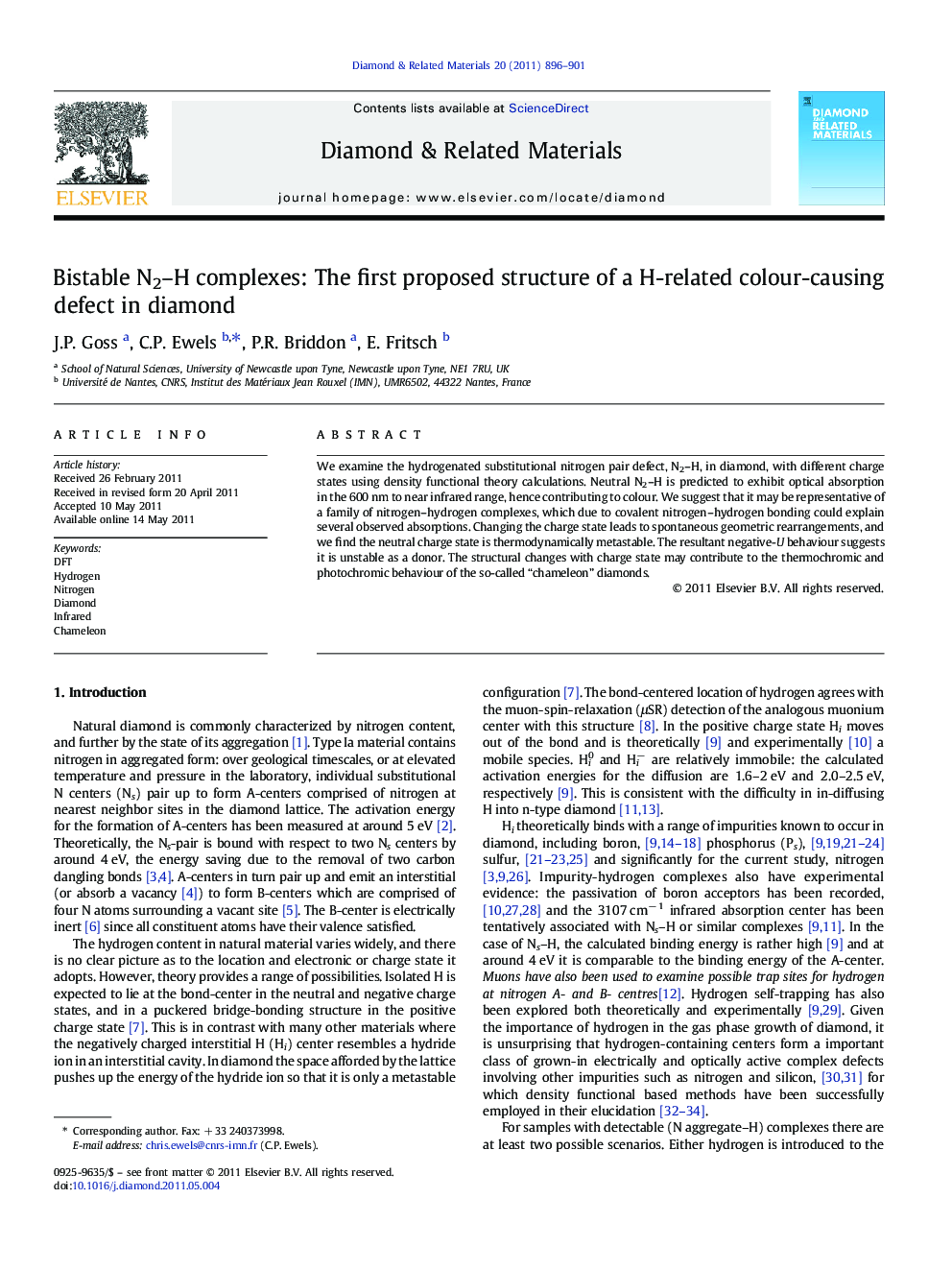| Article ID | Journal | Published Year | Pages | File Type |
|---|---|---|---|---|
| 702569 | Diamond and Related Materials | 2011 | 6 Pages |
We examine the hydrogenated substitutional nitrogen pair defect, N2–H, in diamond, with different charge states using density functional theory calculations. Neutral N2–H is predicted to exhibit optical absorption in the 600 nm to near infrared range, hence contributing to colour. We suggest that it may be representative of a family of nitrogen–hydrogen complexes, which due to covalent nitrogen–hydrogen bonding could explain several observed absorptions. Changing the charge state leads to spontaneous geometric rearrangements, and we find the neutral charge state is thermodynamically metastable. The resultant negative-U behaviour suggests it is unstable as a donor. The structural changes with charge state may contribute to the thermochromic and photochromic behaviour of the so-called “chameleon” diamonds.
Graphical abstractThe hydrogenated substitutional nitrogen pair defect in diamond is shown to be the first hydrogen-related defect in diamond with optical absorption in the 600 nm to near infrared range, hence contributing to colour. It switches structure with changing charge state and may be responsible for colour change in “chameleon” diamonds.Figure optionsDownload full-size imageDownload as PowerPoint slideResearch highlights► Neutral N2H in diamond absorbs in the 600 nm—near-IR range, contributing to colour. ► The N2H defect is a negative-U centre, changing structure when negatively charged. ► The N2H defect may be responsible for colour change in chameleon diamonds. ► N2H is the first defect in diamond with a covalent nitrogen–hydrogen bond.
